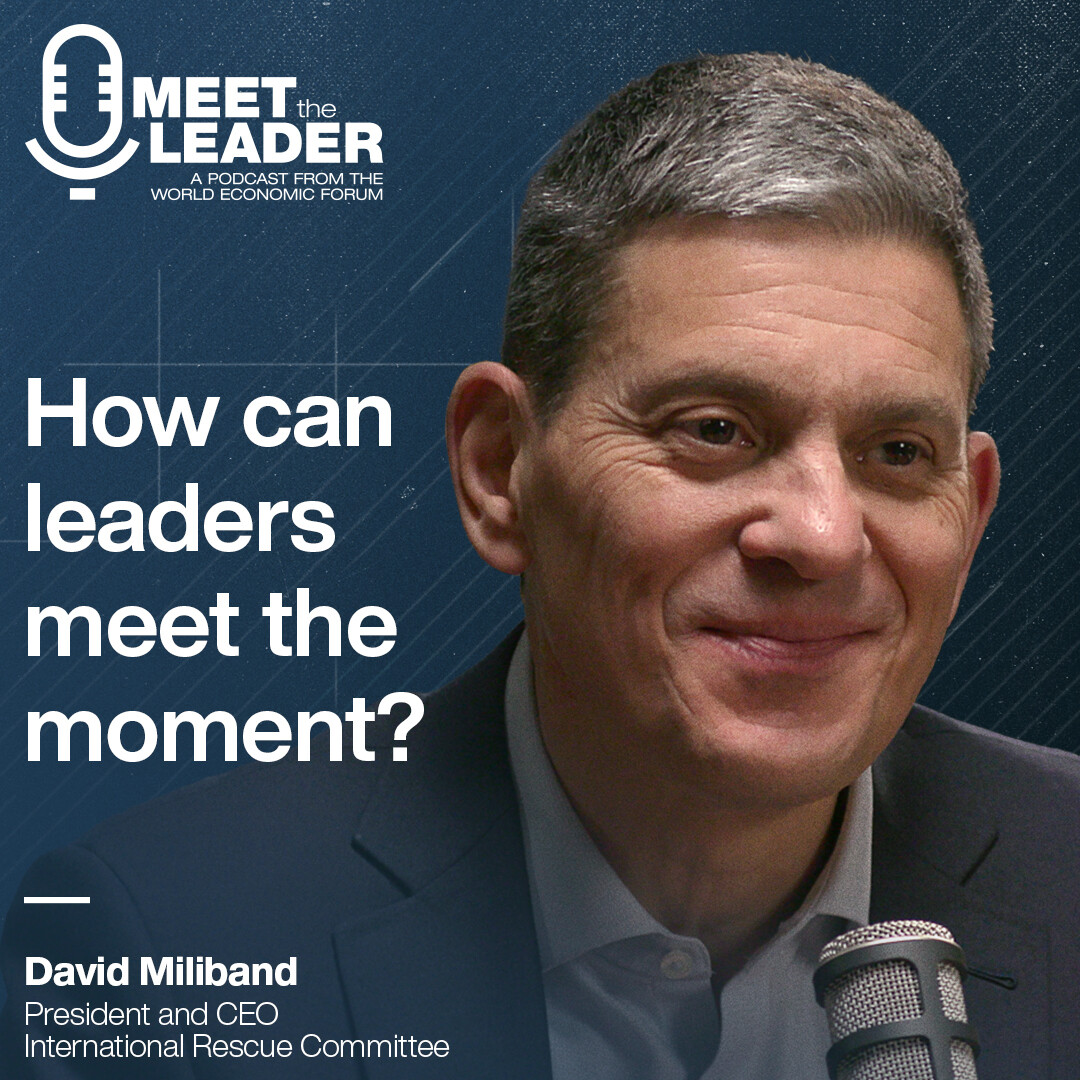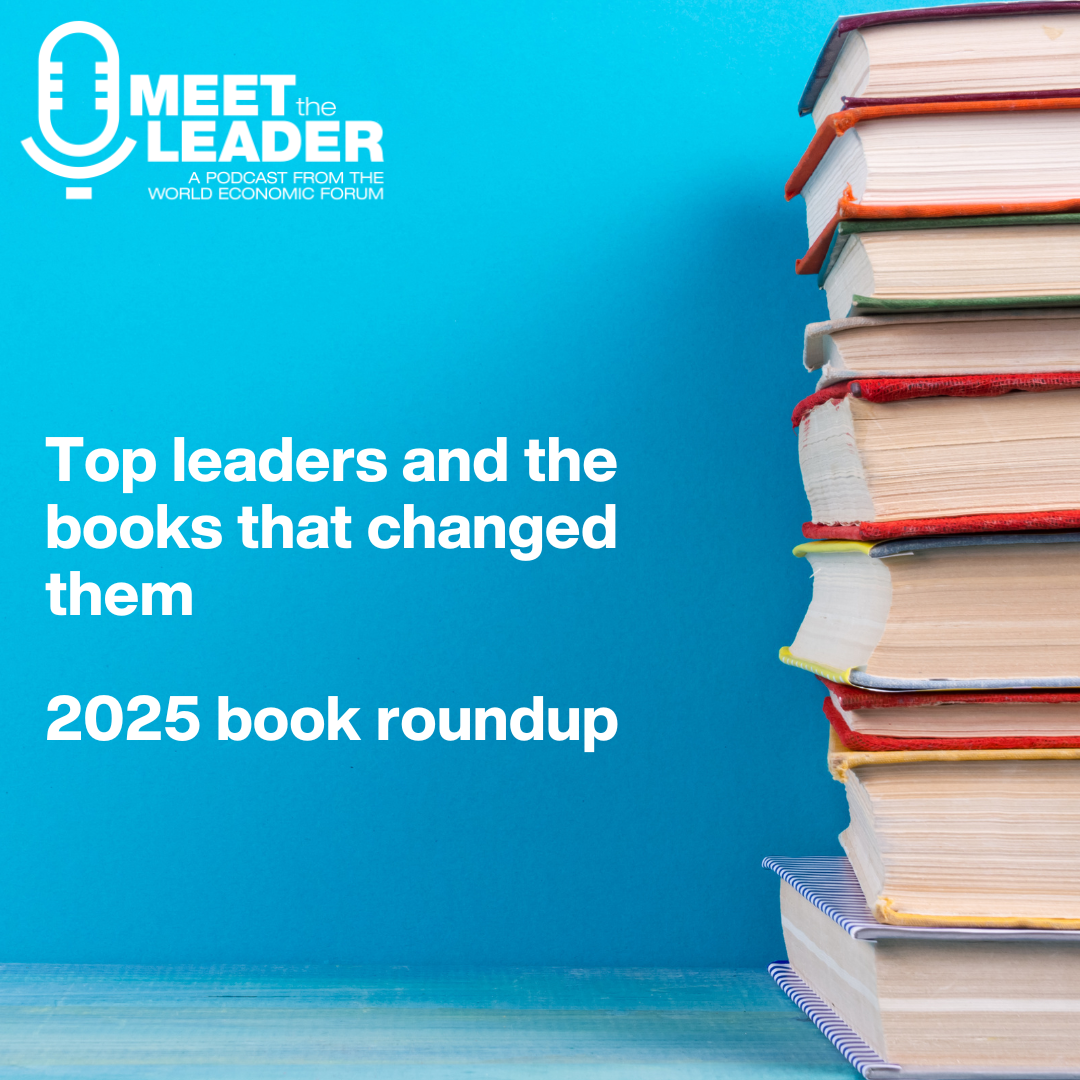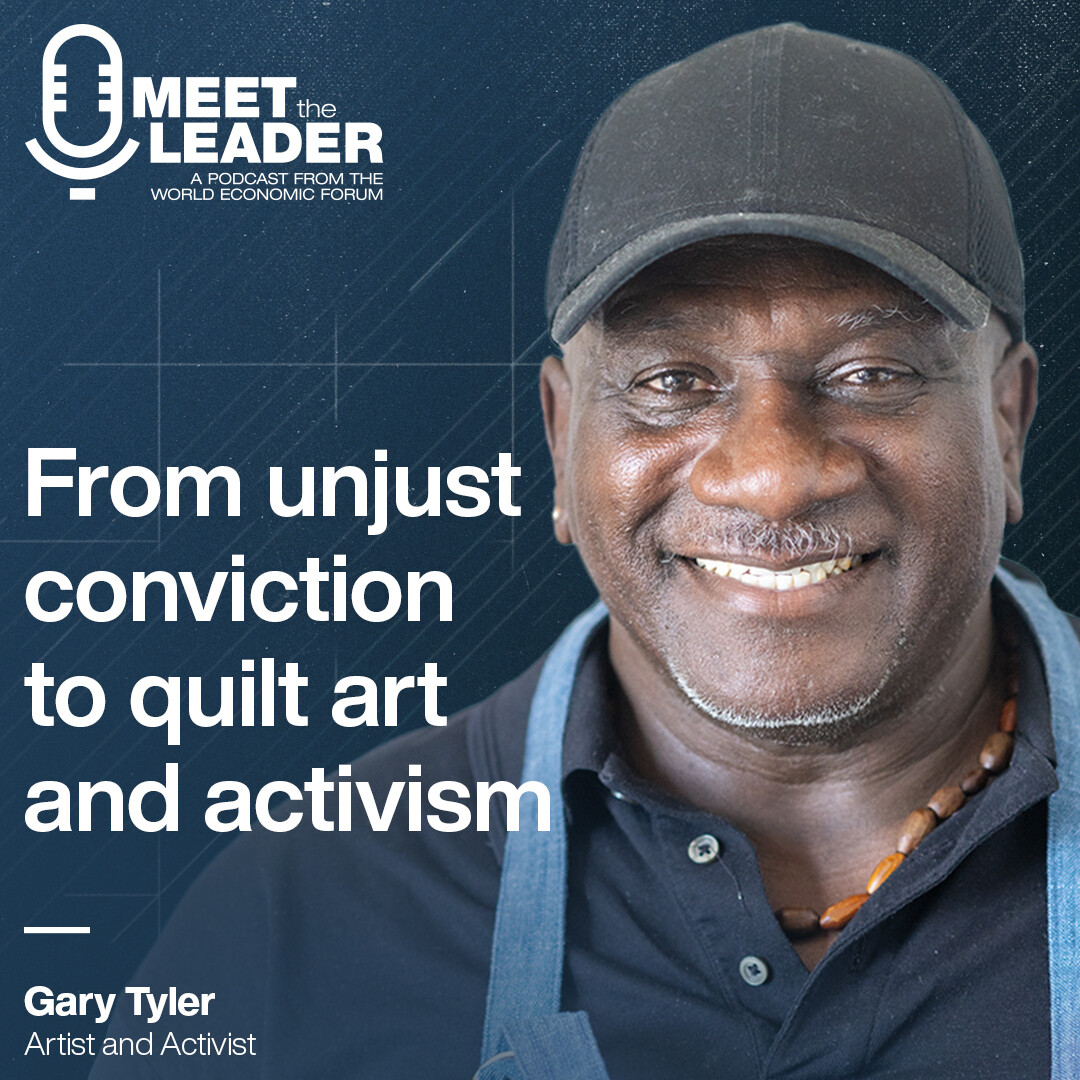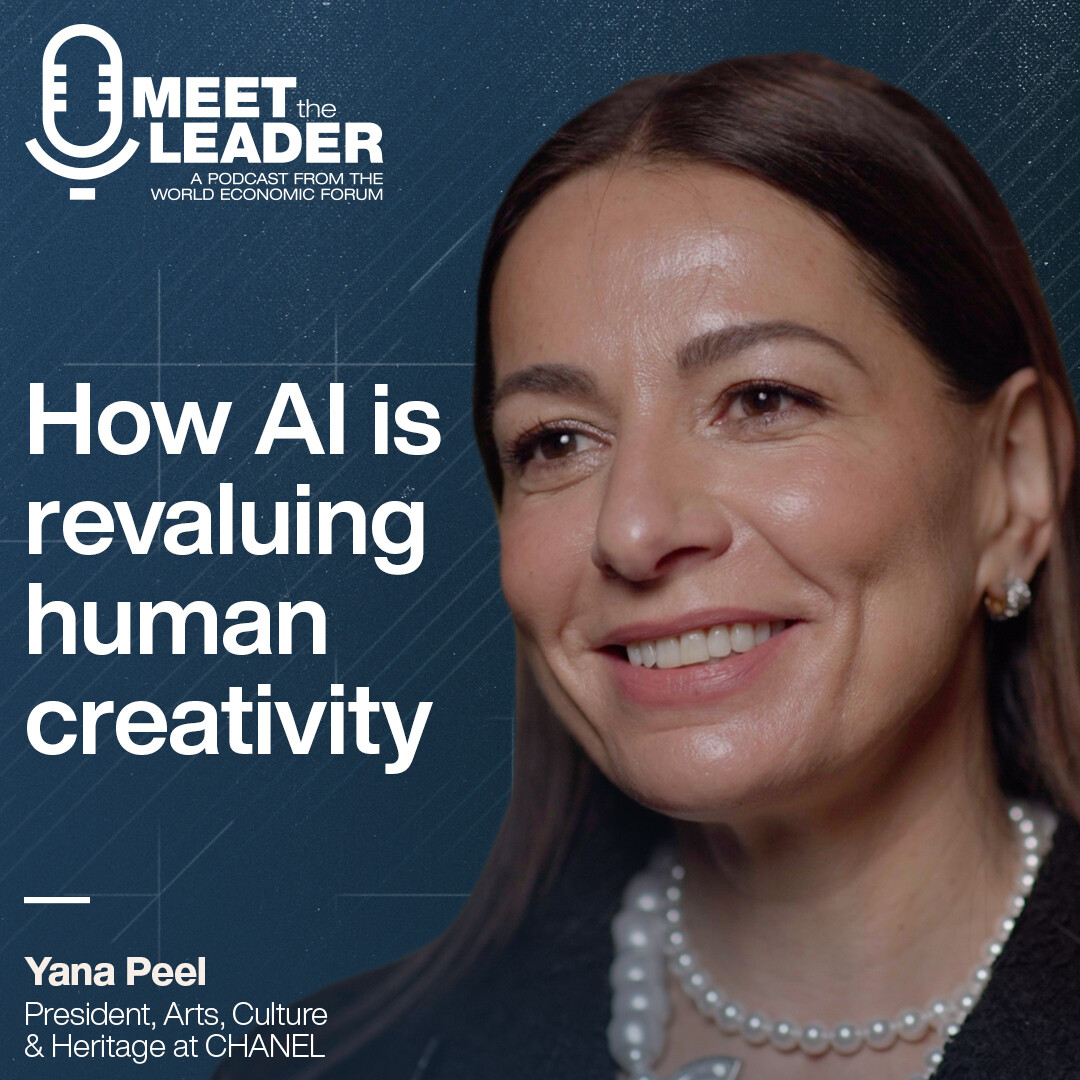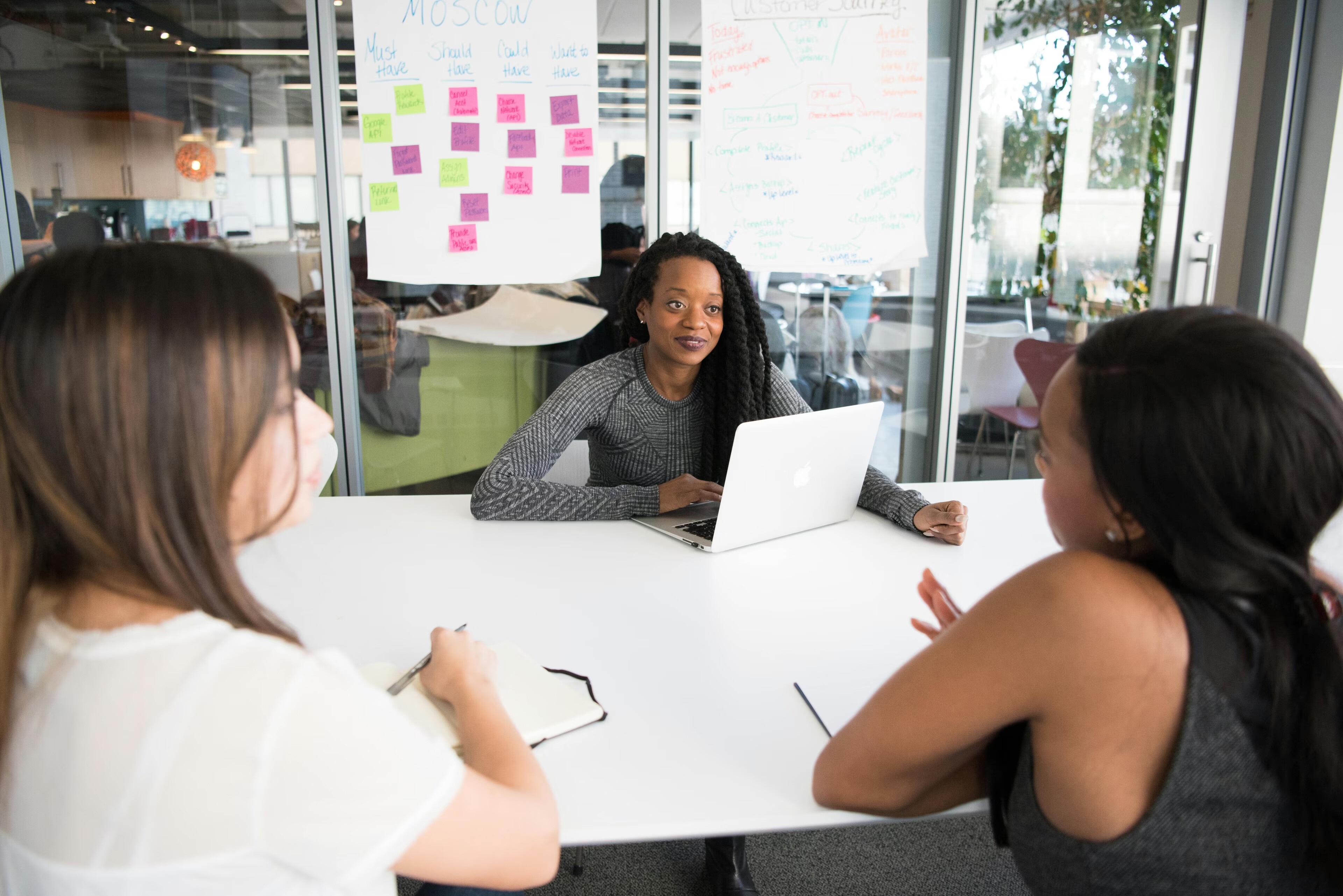Intel's HR chief on reskilling and building teams for the future
As the Chief People Officer for global chipmaker Intel, Christy Pambianchi does more than drive hiring, organizational design or people development. As innovations cycle out at faster and faster clips, she keeps an eye on how technology will reshape work for her teams and how they can stay one step ahead. She shared the importance of building in-company "skills economies", where individuals are empowered to tap into resources to drive innovation, learn new functions, or ready themselves for leadership positions. She shares programs that help expose workers to new tech, like AI, and how a future-ready approach to skilling can help bridge future labor shortages while helping to tackle big challenges.
To learn more:
This episode's transcript: https://www.weforum.org/podcasts/meet-the-leader/episodes/christy-pambianchi-intel-ai-jobs-reskilling
Intel's Responsible AI Principles: https://www.intel.com/content/www/us/en/artificial-intelligence/responsible-ai-principles.html
World Economic Forum Future of Jobs report: Report link: https://www.weforum.org/publications/the-future-of-jobs-report-2023/|
Intel: Intel.com
Related podcasts:
9 leaders from Microsoft, IKEA and more share advice for new grads: https://www.weforum.org/podcasts/meet-the-leader/episodes/9-leaders-share-advice-for-new-grads-2024/
Davos 2024: A conversation with Pat Gelsinger: https://www.weforum.org/podcasts/meet-the-leader/episodes/davos-2024-intel-pat-gelsinger-semiconductor/
7 top innovators share strategies that drive cutting edge solutions: https://www.weforum.org/podcasts/meet-the-leader/episodes/top-innovator-strategies-tactics/
ポッドキャスト・トランスクリプト
Linda Lacina, Meet The Leader Welcome to Meet the Leader, a podcast where top leaders share how they are tackling the world's toughest challenges.
In today's episode, we talked to Christy Pambianchi. She is the chief people officer at global chipmaker Intel. She'll talk about the work trends that she has top of mind -- ones that will reshape jobs and workplaces.
Subscribe to Meet the Leader on Apple, Spotify, and wherever you get your favorite podcasts. And don't forget to rate and review us. I'm Linda Lacina from the World Economic Forum and this is Meet the Leader.
関連記事を読む
4 lessons in workforce skilling and lifelong learning
The reskilling revolution can transform the future of work for women
Davos 2024: 6 innovative ideas on reskilling, upskilling and building a future-ready workforce
Skills-gap crisis: 4 ways the public and private sectors can join forces to reskill workforces at scale
Christy Pambianchi, Intel 10 20 years ago, a lot of the thinking was, how can I accelerate time to competence? How can I tell everybody exactly how to do their job? And in a sense, that removes creativity because it's saying, do these ten things and don't do anything other than these ten things in this particular job. So now we want to be able to educate people on here's the core of a role, but here's all the places you can go to get resources and help self-help and drive innovation in that.
Linda Lacina, Meet The Leader Christy Pambianchi is the chief people officer at Intel, one of the world's largest chip makers. She drives human resources for more than 120,000 employees all around the world. At its heart, this role tackles things that you might expect organizational design, people development, culture. training, compensation.
But at a technology company, in an era where innovation is cycling out at a faster and faster clip, her role really means keeping an eye on how technology is going to change business, industry and work in ways that can be impossible to predict --and how she can help Intel's teams stay a step ahead.
I had the chance to talk to Christy at Davos this year about the trends she's watching from how I will reshape HR, to innovative programs that can help bridge future labor shortages, to how to make sure reskilling initiatives actually move the needle.
She'll talk about all this and how leaders can make the most of that crop of new grads that just started at their companies. But first, she'll get us started with Intel's hybrid-first policy and how they make hybrid work work.
Christy Pambianchi, Intel So we have 120,000 employees worldwide, very, very global, we're in over 50 countries. And so we start with the work. Some of our jobs, you know, have to be done on site in our production capacity and our invention capacities. But we have a lot of our jobs that also can be done in a hybrid-first model.
We have a set of principles. We really care a lot about the culture and the values of the company. But at the same time, we want teams and leaders to decide what's the best kind of schedule and cadence for work activity.
We also have a lot of distributed teams, so we have teams that collaborate across countries around the world. With all of our digital workplace tools, you know, teams can be in three, five countries, different locations, at the same time. Rather than us kind of mandating top down what a particular team's schedule needs to be in terms of on premise virtual collaborating across geos and time zones, we look for the teams to decide that themselves.
And then we have some general principles as well, for how to make the highest and best use of time when you are together. And we know that people coming out of the pandemic and especially now, place a new premium on the time when they can be together, you know, they want that to be time when they're able to collaborate, co-create, invent. You know, if someone has to, you know, have some alone time to work on a formula or some content they're creating or a breakthrough design, we're helping people understand, well, that might be time that's best spent in more of an alone setting. But if it's time to, co-design or bring something together that has to work across multiple teams, that's probably better done in a collaborative environment and in on site.
That's sort of the underpinning of our hybrid-first strategy and trying to empower leaders, empower employees to understand what are those right things that are best done in collaborative settings, best time where people need that alone time to do their work.
And then I think finally, we were trying to make sure that our spaces that we have on site for our teams inspire creativity, inspire connecting, inspire collaboration. And we know from our employee experience surveys, employees really want that. They want that connection and also helps them link to the purpose of the enterprise. And as we got to all get back together following the couple of years of the pandemic, people were really excited to be back together and either reconnect with old friends or make relationships with new colleagues that have been hired during that time.
Linda Lacina, Meet The Leader With each leader managing their team and making the most of hybrid work. What are the blind spots that can complicated or sort of create friction? What are the ways that leaders, if there were a few principles to sort of like help them relieve those common frictions that could come with hybrid work?
Christy Pambianchi, Intel What we try to do in our buildings is create like neighborhoods. So we'll identify this is a space for people in this kind of team or function, so that as people are coming into our office space -- and often we do have shared space so that teams can co-create, collaborate, there isn't necessarily dedicated office space -- but we do have neighborhoods. So that helps with how do I go in and kind of find my coworkers or my team.
We also obviously have conference rooms and event space and things like that that can be reserved ahead, so teams know if they have an event or they want to have a special, you know, collaboration, meeting a group luncheon and things like that that can be organized.
And then I also think because our teams are distributed, not everybody works in the same location. As we talk about hybrid, we talk a lot about how do you make sure all the people on the team are included. I think one of the blind spots is the discussion had been, is it in the office or not in the office, but in our case -- and I think in a lot of companies cases -- you could have all the team members on site, but they could be onsite in 3 or 5 different locations. So how do you make sure those distributed team members feel included? And so just some general tips about including and making sure each team member is heard.
And then I think another blind spot is that if you are together, you know, it's a it's very easy to then have some casual conversation about how was your weekend or how was your dog, how is your hobby that you know somebody is interested in or even finding that out? So we encourage teams to leave some space at the front and the end of meetings for wellness check ins or just some general, how are you rebuilding some of that social fabric that got eroded during the pandemic.
Linda Lacina, Meet The Leader So Intel has a special set of guiding principles for the global HR community, and it's for inclusion. And it's sort of like help integrate AI better. Why don't you tell us a little bit about that?
Christy Pambianchi, Intel Yeah. Early on with the advent of AI, Intel wanted to publish just some general guidelines for responsible AI. And so those principles we have available on our website for anybody interested to look at. But we really put forth a number of principles. First is that we really believe it's really important that it's open and we really believe in the open ecosystem around AI. And we want also to encourage everybody have transparency and inclusion as AI advances, as a technology that can hopefully continue to drive improvement in people's lives on the planet. So for us, principles involve openness, transparency. We think the AI could be used to also increase inclusion and make sure that it's for all.
Linda Lacina, Meet The Leader And what risks can this kind of protect against?
Christy Pambianchi, Intel I think a couple of things that are really important to protect against. One is we want to make sure that AI does not become exclusive and so only available to a certain group of population, whether it's companies or individuals. We also think that it's really inherent in the development of the AI models, that there's care taken to avoid bias and other things that could be built in unintentionally and then over time, lead to unintended consequences or outcomes that leave cohorts behind. So we really think AI has the possibility to really help advance society for all. And we think that the principles we've outlined will help do that.
AI has the possibility to really help advance society for all.
”Linda Lacina, Meet The Leader Does it surprise people to think how I can be applied for HR and for recruiting? Tell me a little bit about that. Yeah.
Christy Pambianchi, Intel I think in the area of human resources, when we think about generative AI or even just algorithms and, you know, computing power, how might it work in the areas of human resources: I think as a chief people officer, I think it's really important that it's used to enhance, augment and improve. And so I think the ways in which we do that have to be open and transparent. We want to drive trust. We know we want employees as well as potential candidates for interest in our company to know how these kind of tools are used. And in the end, I think it's really important that a human is making the ultimate decisions. But could these kind of tools be used to accelerate and advance knowledge, data consolidation? Could they be used to drive nudges and help employees in their development? Could they be used to give people advice in their job or in their career? Things to think about. So I think there's a lot of ways that AI, as well as some of the other tools, can really be used to increase and improve the world of work, but I think has to be done with intention and carefully.
When we think about generative AI and how might it work in the areas of human resources...it's really important that a human is making the ultimate decisions.
”Linda Lacina, Meet The Leader And you also have an AI for workforce program. Tell us a little bit about that.
Christy Pambianchi, Intel So we have a lot of efforts across the company really focused on increasing, getting students interested in STEM education. Getting K through 12 education programs stood up, afterschool programs, post-secondary school programs, whether it's trade and apprenticeship programs or four-year degree programs, etc.. And so in the AI knowledge space, what we're doing is collaborating across many countries around the world and accelerating, sharing curriculum, helping stand up, you know, capabilities for educators so that they can quickly have content available to them to share. And we're trying to reach as many people as possible. So we've already reached over 4 million recipients with the knowledge and the data that we're helping make available and kind of in an AI for all type of context.
Linda Lacina, Meet The Leader And what is the sort of the impact that you're seeing so far with this program? What are the before and afters that are incremental even? But what do you seeing?
Christy Pambianchi, Intel I think first and foremost, just getting basic knowledge out there, because I think while people are curious, there's also anxiety and fear. And so we think one of the ways in which we can help combat that is make knowledge available for all. So by helping provide curriculum capabilities to educators institutions that helps get things out there quickly. Usually those organizations are, you know, strapped for or have limited resources. So to the extent that we can accelerate sharing of that, then institutions don't have to spend their resources creating content or creating curricula. And then if we could get that to students or interested adults, others that want to make career shifts or enhance their skills, it drives up knowledge, reduces fear, and we think this technology is going to be better the more people that are interested and understand it.
Linda Lacina, Meet The Leader Lots of folks have programs for upskilling that are free, even, you know, whether they're for schools or whether they are for like professionals, to kind of get a boost. Some of them are more successful than others. What is a critical element to make sure that people are able to get what they need and they're engaged and they can maybe take it further. Is there some kind of special secret sauce, special ingredient?
Christy Pambianchi, Intel The way we think about these kind of investments in education and skilling is we really view ourselves as a part of the formula. But the other key ingredients to the formula are strong collaboration with the institutions, with the educators, and then with the community. And we try to play like, what's the role that we could play? What's the expert capability that we at Intel can uniquely add or the expertise that we have? And so one of the things that makes it stickier or makes it the outcomes more strong is that collaboration. So we'll build the curriculum, but then we'll work with educators to help them figure out how to meet students where they are with the content. And then similarly in the community. So in the communities we're operating in, work with the educators and figure out where they trying to draw students from, where are they trying to draw mid-career professionals from?
The other thing I think that we have done that makes our programs successful is when we're scaling them. We realize again that there's limited resources. So we really again espouse the principles of openness and inclusion, and we try to scale the programs quickly. And then we have great partners. So we, you know, partner with local community colleges, four year degree institutions, even some of the digital space like Khan Academy and others. So we help put the content in. And then the other thing we do is we have equipment. So in the semiconductor industry there's a lot of equipment in the operation. So we'll put equipment and labs into institutions. And then that will allow their faculty to have access to it. So I think it's that combination of assets, curriculum, support for the educators and that helping them attract and address the students or the populations where they are in their community. So we don't suppose that we know. We look to collaborate with them to do that.
Linda Lacina, Meet The Leader If these programs didn't exist, how would we fare in terms of bridging the gap for the upcoming labor shortages we're going to be seeing in a variety of sectors. What would that risk be?
I think that it's really important that companies and the communities in education system collaborate together so that we have the workforce for the future that we need.
”Christy Pambianchi, Intel I think that it's really important that companies and the communities in education system collaborate together so that we have the workforce for the future that we need. And I think as companies and as HR leaders, we find that we're often then in candidate identification, selection, onboarding, if we can't find or there's a scarcity of talent, then we have to build that into knowledge, training and development on the job and of course, we're capable of doing that. But we also think if we can build it into the development of the talent pipeline, it's better for all.
As we also look at labor scarcity, some of the things we're thinking about, as well as are adjacent fields where talent might have and people might have some skills, but not all the skills. And if we're able to augment their core skills with some new things that might help widen the aperture and increase the talent funnel for some of the areas of the labor market that are growing and also help people transition as the economy evolves over time to jobs that we think are going to grow.
And we also find to with our outreach and our education programs, some of the objective that we have is to build up candidates' confidence that these are skills that they can easily acquire, or these are jobs that actually might be appealing to them. Sometimes people hear about technology jobs or maybe coding jobs in recent AI job and they might think, "Well, that's not for me." And so we also try to like kind of lower the barriers to entry and give people places where they can experiment, learn a little bit, and hopefully through that can kind of be convinced. "Wow, maybe this is a job I could be good at." So these are all the ways that we're trying to increase the size of the of the labor pool available for jobs that we know are thoughtful and going to lead to enriching careers.
Linda Lacina, Meet The Leader What trends are you seeing for the future of jobs in 2024?
Christy Pambianchi, Intel I think it's super exciting time. You know, the rate of innovation continues to accelerate over the last 20 years, and I see that obviously propelling forward at an even more accelerated rate with new parts of the economy expanding, whether it's new tools in AI or whether it's, you know, the work that we're doing to rebalance semiconductors worldwide. So I think trends that are going to continue to emerge is really a lot of focus on skills and building employees' confidence and identifying what are the skills they have, what are the skills they want to acquire, and companies making a lot of skill-based training available to people.
And as we think about work, work is really going to become a compilation of skills and ways in which people apply those skills. And so we're trying to create more of like a skill economy inside of the company. And so we most recently updated all of our jobs so that they're more current and refreshed for the new work environment. And we're helping employees kind of capture what skills do they have. And then we link that to all of our learning libraries so people can build out learning curriculum for themselves. Figure out for every job we have, what are the core skills required? What are some optional skills? So now that's transparently available to all employees in the company. So as they think about, aspirationally, what job may I want to aspire to? It could be in another function. It could be laterally in another part of the company. It could be an aspiration to move up in leadership or in technical fellowship. But now they can see what are those skills. Maybe they can identify other exemplars that have it and start to really almost take ownership of and power for what are the skills they're acquiring so that they really have intention about the way they hope to evolve their professional career.
Linda Lacina, Meet The Leader People are talking about skilling and jobs and what's going to happen with the economy. But in your mind, are there certain things that have been overlooked? Something like, you know what everyone is talking about that which is great, but I wish they would talk more about X. Like is there something like that that you just wish got more attention?
I'm personally super curious about and interested in how we can take the power of what AI and generative AI has to offer and bring employees into helping create what that future could be
”Christy Pambianchi, Intel I think in the area of AI, one of the things that I really wish got more attention and I'm working hard with a number of peers of mine to drive, is to me, AI has the capability to augment the human capability, not replace it. And I think like early days of a new technology, there's a fear cycle that it's really ultimately going to replace humans or work. But instead, I think it has the power to really augment our capabilities and be almost like a coworker as someone's going through their job. And so I'm personally super curious about and interested in how we can take the power of what AI and generative AI has to offer and bring employees into helping create what that future could be.
And I think it's going to be involving employees, involving people in that. That's going to first help us realize the full potential of it, because no small group of people is going to be able to architect what the full capability of AI or generative AI is in the workplace. So one of the things I'm trying to drive is bring all employees into it and then say, this is what the tools are capable of. How would you apply them? And I'm very, very excited about kind of the "human plus" -- what AI is going to enable us to do.
AI has the capability to augment the human capability, not replace it
”Linda Lacina, Meet The Leader There's going to be a new crop of graduates this year. They're going to be entering a workforce that's unlike no other. They're going to have a longevity that's unlike no other. What's one thing they should make sure they land in this first phase of their career?
Christy Pambianchi, Intel Young people joining the workforce. One of the things I think we have put a more attention back on is just actually sharing and helping educate, you know, new entrants coming right out of school and just social practices in the workplace. You know, we can't presume that they have that from before. It's very, very basic. But we find that that's really, really helpful for our college hires, our new entrants to the workplace. And then in addition really kind of quickly helping them understand what are all the resources available to them.
What's really great about the new generation is they've grown up digital first, and they're a generation of what I call tinkerers. You know, they've grown up just looking for how to do things online, self-helping themselves. And so that's really, really exciting. So I try to figure out how can we channel that inside the workplace. And instead of telling them everything of how to do everything, kind of pointing them toward what are the resources inside the company, whether it's web resources, digital resources, knowledge workers that can help them, where are those places to point your inquisition to? You know, keep your curiosity spurred and then find resources to help you on the job.
I think that's a really important distinction for this generation of workers coming in. They are self-taught. They like to understand, they like to create. They've been brought up to be makers, curious innovators. And so I think we have to think about how do we create that in the workplace. And I would say, you know, ten, 20 years ago, a lot of the thinking was, how can I accelerate time to competence? How can I tell everybody exactly how to do their job? And in a sense, that removes creativity because it's saying, do these ten things and don't do anything other than these ten things in this particular job.
So now we want to be able to educate people on here's the core of a role, but here's all the places you can go to get resources and help self-help and drive innovation in that.
We want to be able to educate people on here's the core of a role, but here's all the places you can go to get resources and help self-help and drive innovation in that.
”Linda Lacina, Meet The Leader That was Christy Pambianchi. Thanks so much to her, and thanks so much to you for listening. Find a transcript of this episode, as well as transcripts from my colleagues podcast, Radio Davos at wef.ch/podcasts.
This episode of Meet the Leader was produced and presented by me, with Jere Johansson and Taz Kelleher as editor, Juan Toran as studio engineer in Davos and Gareth Nolan driving studio production. And that's it for now. I'm Linda Lacina from the World Economic Forum. Have a great day
トピック:
リーダーシップその他のエピソード:
もっと知る リーダーシップすべて見る
Ida Jeng Christensen and Raju Narisetti
2025年8月8日

